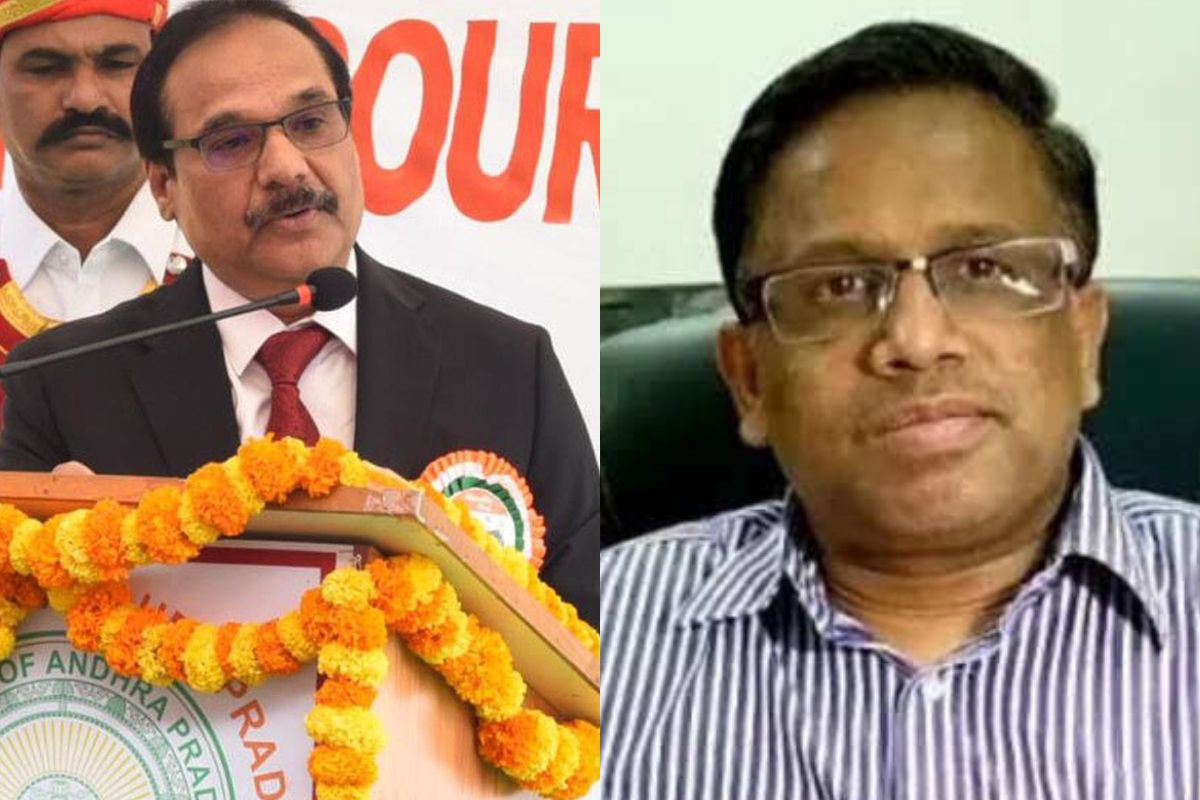Top court judges are not pro-government: Supreme Court
The Supreme Court on Thursday said that its judges were not pro-government and pointed at the way the apex court…
Upon appointment, Vishwanathan will go on to become Chief Justice of India and will succeed Justice JB Pardiwala as Chief Justice of India on 11 August 2030.

Justice Prashant Kumar Mishra and senior advocate KV Viswanathan [File Photo]
The Supreme Court collegium headed by Chief Justice DY Chandrachud on Tuesday unanimously recommended the appointment of the Chief Justice of Andhra Pradesh High Court Justice Prashant Kumar Mishra and senior advocate KV Viswanathan as a judge of the top court. Viswanathan is a practising advocate of the top court for the last many decades.
Upon appointment, Vishwanathan will go on to become Chief Justice of India and will succeed Justice JB Pardiwala as Chief Justice of India on 11 August 2030.
The top court has a sanctioned strength of 34 judges and at present it has two vacancies and by July it will have four more vacancies.
Advertisement
Besides Chief Justice Chandrachud, the other members of the collegium are Justice Sanjay Kishan Kaul, Justice K.M. Joseph, Justice Ajay Rastogi and Justice Sanjiv Khanna – the four senior most top court judges after the Chief Justice of India.
Recommending Justice Mishra for appointment as a top court judge and noting that he stands at number 21 of the seniority list of the High Court judges, the collegium in its resolution has said, “After carefully evaluating the merit, integrity and competence of eligible Chief Justices and senior puisne Judges of the High Courts and also accommodating a plurality of considerations, the Collegium finds Mr Justice Prashant Kumar Mishra, Chief Justice, Andhra Pradesh High Court (PHC: Chhattisgarh) to be more deserving and suitable in all respects for being appointed as a Judge of the Supreme Court of India.”
Chhattisgarh High Court is the parent High Court of Justice Mishra and Chhattisgarh High Court is not represented in the Supreme Court. Justice Mishra became the judge of Chhattisgarh High Court on December 10, 2009.
The collegium also said that it is conscious of the fact that Chief Justice of Allahabad High Court was appointed as a judge of Chhattisgarh High Court on May 31, 2009, and is senior to Justice Prashant Kumar Mishra, “however, having considered all relevant factors, the Collegium is of the view that Justice Prashant Kumar Mishra is worthy of appointment as a judge of the Supreme Court.”
The resolution recommending Viswanathan for appointment as a judge of the top court, the collegium said, “Having regard to the fact that at present there is only one member from the Bar directly appointed to the Supreme Court Bench, the Collegium has also considered the names of eminent members of the Bar. In their considered opinion, Mr K V Viswanathan, Senior Advocate is eminently suitable for being appointed as a Judge of the Supreme Court. The appointment of Shri K V Viswanathan will enhance the representation to the Bar in the composition of the Supreme Court. Shri Viswanathan is a distinguished member of the Bar of the Supreme Court. His wide experience and profound knowledge will provide a significant value addition to the Supreme Court.”
In the first instance, then Chief Justice Uday Umnesh Lalit had recommended Viswanathan for appointment as judge of the top court but due to some procedural reasons the entire exercise initiated by the then Chief Justice Lalit for the appointment of four judges had to be shelved.
Viswanathan was appointed as amicus curiae (friend of the court) to assist the court in several matters including latest case where the repeated extension to ED Director Sanjay Kumar Mishra were challenged including amendment to CVC Act providing for giving five year term to ED Director (two years initial appointment and subsequent three extension of one year each).
Viswanathan had told the court that such extensions would lead to stagnation in the official hierarchy and amendment to CVC Act is likely to be misused by the future governments.
The top court collegium considered various factors in the selection process that included seniority of the Chief Justices and senior puisne Judges in their respective parent High Courts as well as overall seniority of the High Court Judges, their merit, performance, integrity, and need to ensure diversity and inclusion.
Besides this, the collegium also considered the representation of High Courts which are not represented or are inadequately represented in the Supreme Court, appointment of persons from marginalized and backward segments of society, gender diversity; and representation of minorities.
Advertisement